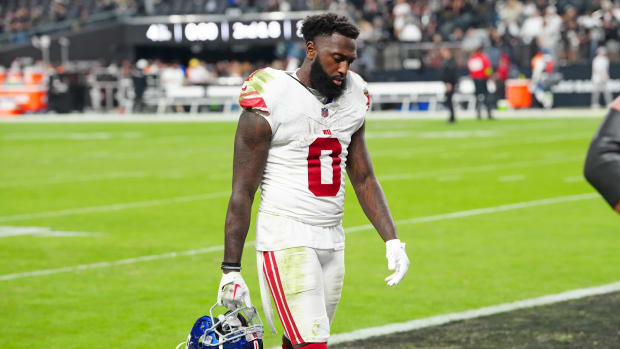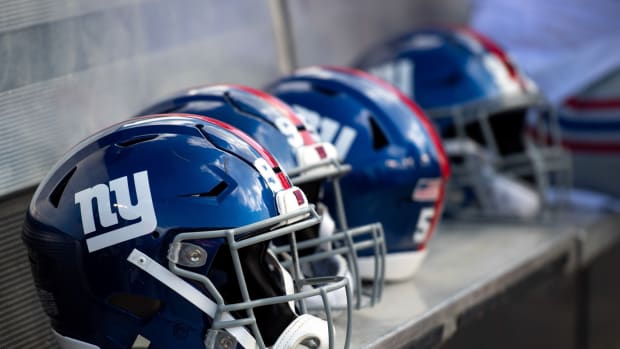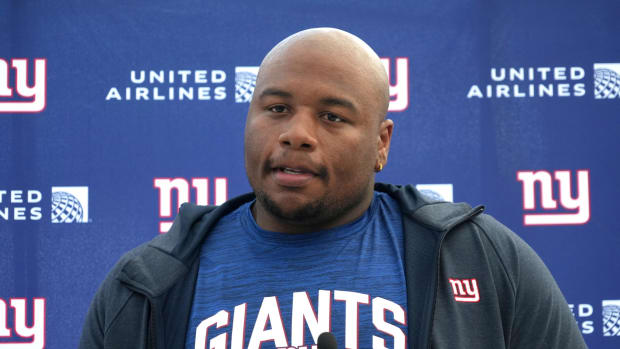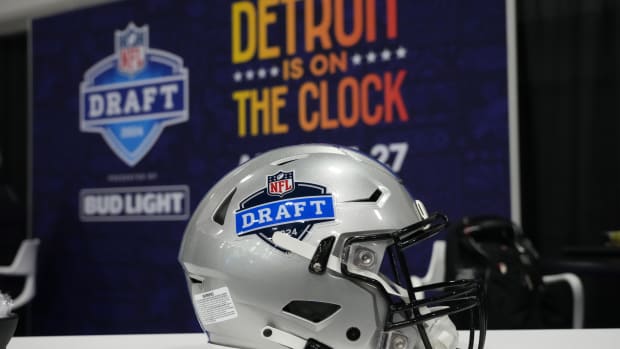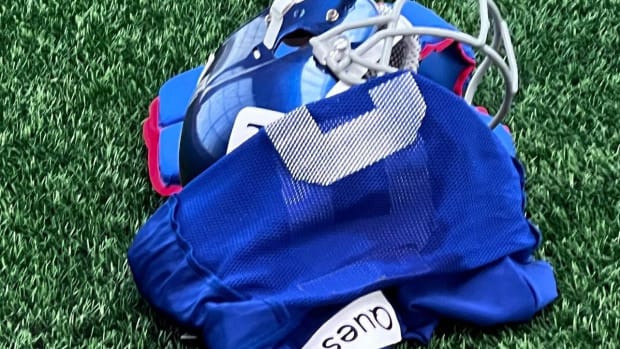Giants Draft Preview: Best Quarterback Fits
The Giants need to draft a quarterback, right? Plus, why the team might be willing to take the $12 million injury risk with Daniel Jones?
The New York Giants have tried to downplay the need for a quarterback by declaring that the “expectation” is for incumbent Daniel Jones to be the starter in 2024. While we believe that to be true—we’ll get to why in a moment—we don’t see how the Giants, given Jones’s injury history and regression last year in the six games he did play in, go ignored moving forward when there is a plethora of quarterback talent in this draft.
From the end of last season onward, Schoen has said that the position would need to be addressed. While Jones is on track in rehab from a torn ACL, there are no guarantees he’s ready to start the season. That’s where veteran Drew Lock, signed during free agency, comes into play. Lock projects as the QB2 on the roster once he gets up to speed on the playbook.
And what about Tommy “Cutlets” DeVito? Credit must be given to the young man for coming in off the practice squad last year, something the team never anticipated would need to happen, and proving that the game wasn’t too big for him.
While he managed a three-game winning streak, including one very impressive win against the Green Bay Packers, DeVito also often showed why rushing a young quarterback—particularly an undrafted one—into the lineup was not smart.
So, do the Giants need to take a quarterback in this draft or is all this work they’ve reportedly done just for show?
We’d still find it hard to believe that the Giants, knowing Jones’s injury situation and having that escape hatch after he finished Year 2 of the four-year deal, would pass on a quarterback from such a deep class.
If we are to assume the Giants are looking to draft a quarterback, the question now becomes who and when? If the Giants want a top prospect, they’ll probably have to trade up a compensation package conceivably, including picks from next year’s draft haul.
But with so many roster needs still requiring filling, Schoen needs to ask himself if he can afford to give up a haul for a player who, at the soonest, will yield a return on investment in a year’s time.
The more likely scenario, if the Giants go quarterback in Round 1, is to trade back into the bottom of the first round or to the top of the second round, both of which shouldn’t bear a cost that would be as astronomical as is projected to trade up from six to three, four or five.
The ($12 million) Question
The biggest question centers around Jones, who has had two neck issues in three years, who is coming off the torn ACL, and who has an injury guarantee in his contract next year in which, if he can’t pass a physical, $12 million of his base salary becomes fully guaranteed.
Let’s examine that guarantee and why the Giants might be willing to take that risk. Over the Cap currently has the Giants with $33.405 million in cap space in 2025.
If tight end Darren Waller retires, as it appears to be trending, they’ll gain another $10.541 million in space to boost that total to over $43 million.
Waller is key here. If he becomes a post-June 1 transaction this year, which again seems to be the trend, the Giants will gain $11.625 million in savings, which should be more than enough for them to make it through the 2024 season.
If they find that come next year, they need to open more cap space, at that point, they could restructure with left tackle Andrew Thomas’s contract.
The point is that having to eat $12 million in an injury guarantee isn’t as catastrophic as it sounds, not when Schoen has options that can be done to soften that blow.
This, along with the team belief that, as of right now, Jones is the best quarterback option to give them a chance to win, combined with the strong likelihood that a rookie will sit for his first season, is why the Giants are likely willing to take the risk with Jones’s contract.
Potential Prospects
Day 1: Drake Maye (North Carolina)
Scouts have anticipated Drake Maye’s entrance into the NFL draft since his breakout sophomore campaign in 2022. At 6-foot-4, 224 pounds, Maye has a prototypical blend of size, arm strength, and athleticism. His arm strength and mobility allow him to lead the 2024 quarterback class in high-difficulty, high-value “Big Time Throws.”
Like Caleb Williams, Maye has a relatively high sack rate, which can sometimes get him into trouble. That said, his propensity for creating big plays is exciting. Evaluators will love Maye’s upside, and coaches will be excited for the opportunity to mold him.
Late Day 1/Early Day 2: Bo Nix (Oregon)
Nix was highly regarded as a recruit for his athleticism and arm talent. It seemed like he would immediately make good on his promise, starting as a true freshman at Auburn, beating Justin Herbert’s Oregon in his first game. Then everything went downhill, and Nix struggled to carry an under-manned squad through the SEC.
Nix got a fresh start after transferring to Oregon and started to look like the player people thought he could become out of high school. Now, he's an older, more experienced quarterback with great arm strength and athleticism.
However, he also set an NCAA record for accuracy and has learned to take small gains instead of trying to chase big plays. He might not last to Day 2—the Giants, if they want him, might have to trade up to either the top of the second round or back into the bottom of the first round.
Day 3: Joe Milton III (Tennessee)
There is no more physically talented quarterback in the 2024 Draft than Milton. Milton has truly prototypical traits at 6-foot 5 inches, 235 pounds, and ten ¼ inch hands.
He also has the strongest arm in the draft, with his 62mph ball velocity at the Combine matching Josh Allen’s measurement at his Combine. And as with Allen, Milton effortlessly generates power and distance on his deep ball – much to the delight of fans. He’s also a powerful player who can break tackles and is athletic enough to extend plays.
Unfortunately, Milton is even more erratic and inconsistent than Allen was coming out of college. Milton doesn’t seem to process the defense quickly or have a great field vision.
He can be prone to staring down targets and waits until receivers are open instead of throwing with anticipation. Likewise, he struggles to throw anything but his fastball and can be erratic in his accuracy and placement.
Still, Milton has all the physical tools scouts and evaluators want to see in a prospect, but he doesn’t seem able to consistently use them at a high level.
- Follow and like us on Facebook.
- Submit your questions for our mailbag.
- Follow Patricia Traina on Instagram.
- Check out the Giants Country YouTube Channel.
- Subscribe and like the LockedOn Giants YouTube Channel
